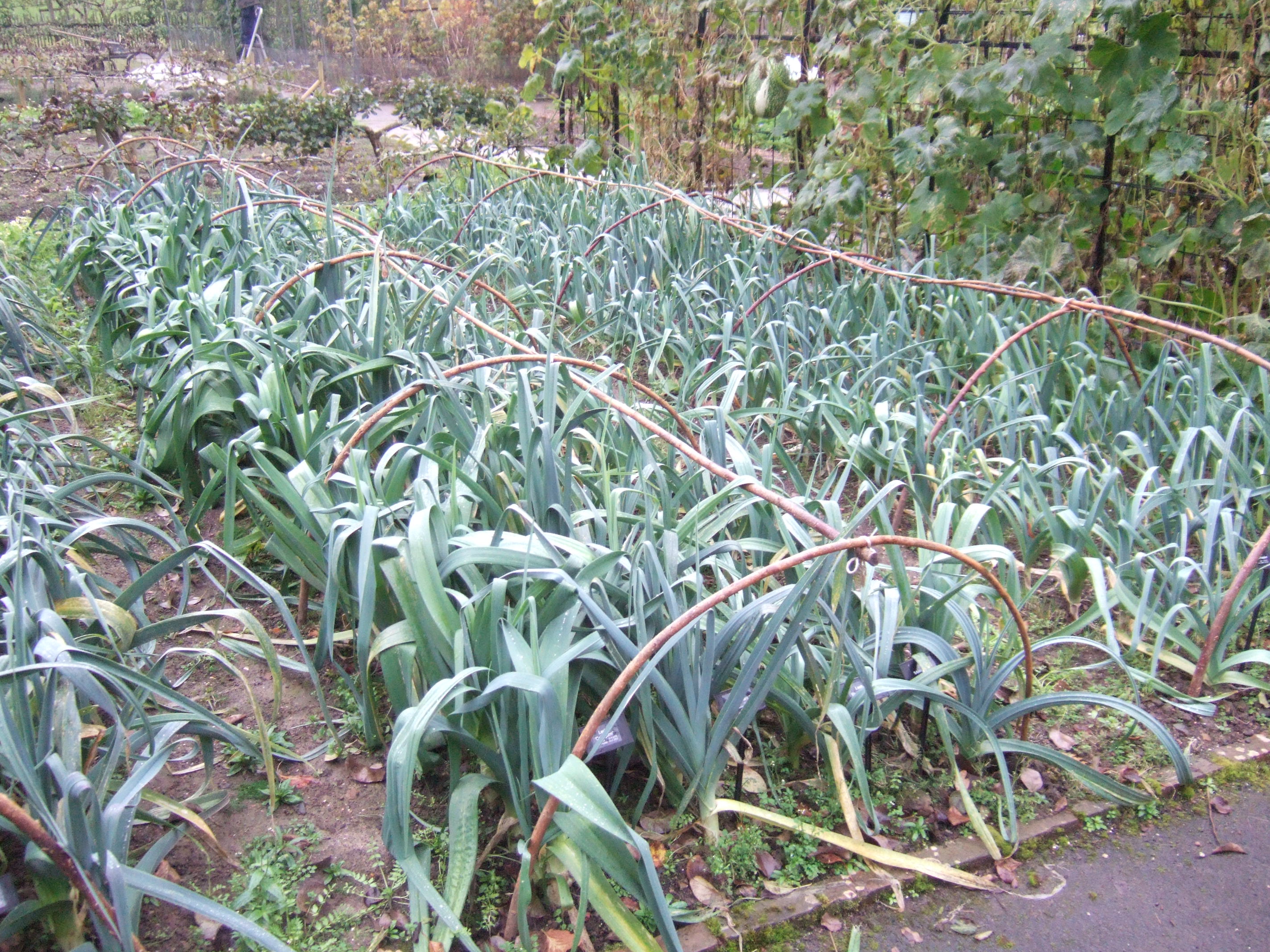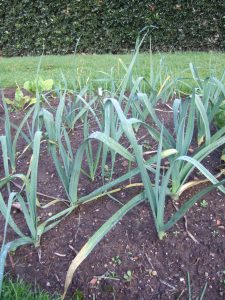Leeks (Allium porrum) are a fantastic winter crop. They add depth and flavour to any number of slow cooked winter dishes. They are also very hardy and the right varieties can stand unscathed through out the winter months.
Leeks require a long growing season, so if you want to have fresh leeks to eat in January and February you have to start almost 12 months earlier. The key point to remember is like many winter crops they actually do most of their growing during the spring, summer and autumn and sit dormant during the dark winter days ready to be harvested.
Leeks are best sown in a seedbed, seed tray or modules.
A seedbed is an area of the vegetable garden that is specifically set aside for raising seeds. It is particularly useful for crops such as leeks and winter brassicas that start off small, require a long growing season and eventually grow into large crops that require a large amount of space. The seeds are sown fairly closely in the seedbed and then transplanted when they are large enough.
Leeks can be sown outside in March and April. However the soil must be at least 7°C if they are to germinate. I usually wait until April. To give them an early start they can be sown indoors in seed trays or modules from late February.
Transplant the seedlings when they have grown to about pencil thickness. The ultimate size of leeks is determined by how far they are spaced apart. About 23cm between the plants results in reasonable sized leeks. Make deep (15-20cm) holes using a dibber and drop the seedlings in – this is how the white, blanched stem is formed. Water the seedlings to settle the roots but you do not need to fill the holes, this will happen naturally.
Water well and keep weed free.
Harvest the leeks from autumn through the winter. Try to use them all up before they start to produce flowers in the spring.
To cook leeks I think they are best softened slowly in butter before adding to a range of recipes or simmered in soups and stews.
One of my favourite recipes is leek and gruyere quiche:
First make the pastry; rub 75g of butter into 150g of flour add a pinch of salt and one egg yolk (optional) Mix in enough cold water (approx. 2 tablespoons) to make a pliable dough. Wrap in a plastic bag and refrigerate for one hour.
While the pastry is resting, wash and finely chop 2 large leeks. Sweat them over a low heat in butter with thyme and garlic until they are very soft. This takes 15-20 minutes.
Heat the oven to 220°C. Roll the pastry thinly and line a greased quiche or tart dish. Prick the bottom all over with a fork (this prevents the pastry from rising up when it is baked in the oven). Bake the pastry case for 12-15mins until it is light, golden brown and crisp.
When the pastry is baking mix 2 eggs with a small pot of cream and approximately 150g of gruyere cheese, then added the cooked leeks and season.
When the pastry comes out of the oven reduce the heat to 160°C. Pour the filling into the pastry case and bake for 30 minutes or until just set.
Allow the quiche to cool slightly before eating with salad and boiled potatoes.
Postscript: Ben Harrison the head chef from the Gateway restaurant recommends using Isle of Mull cheese as a good Scottish alternative to gruyere.


